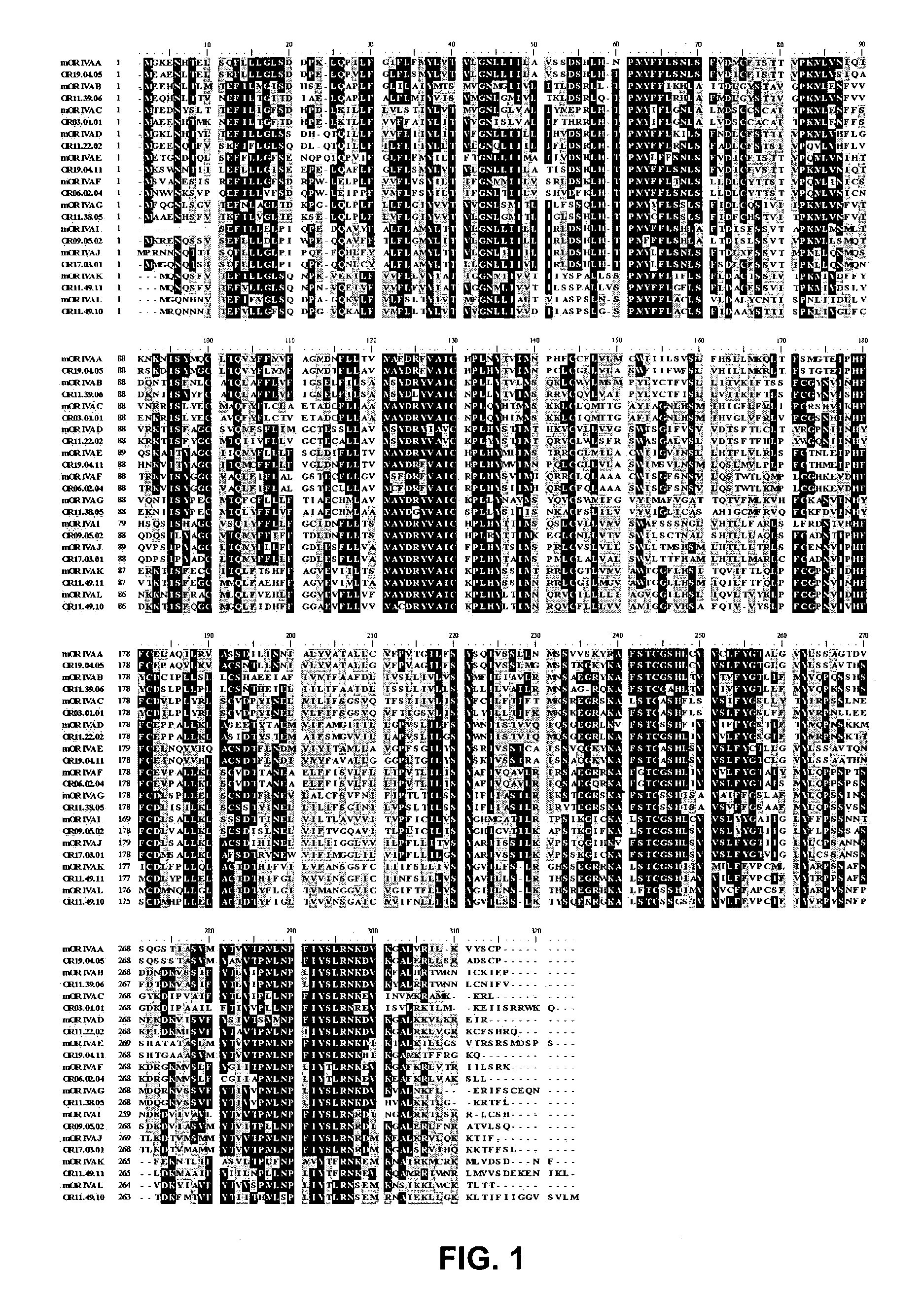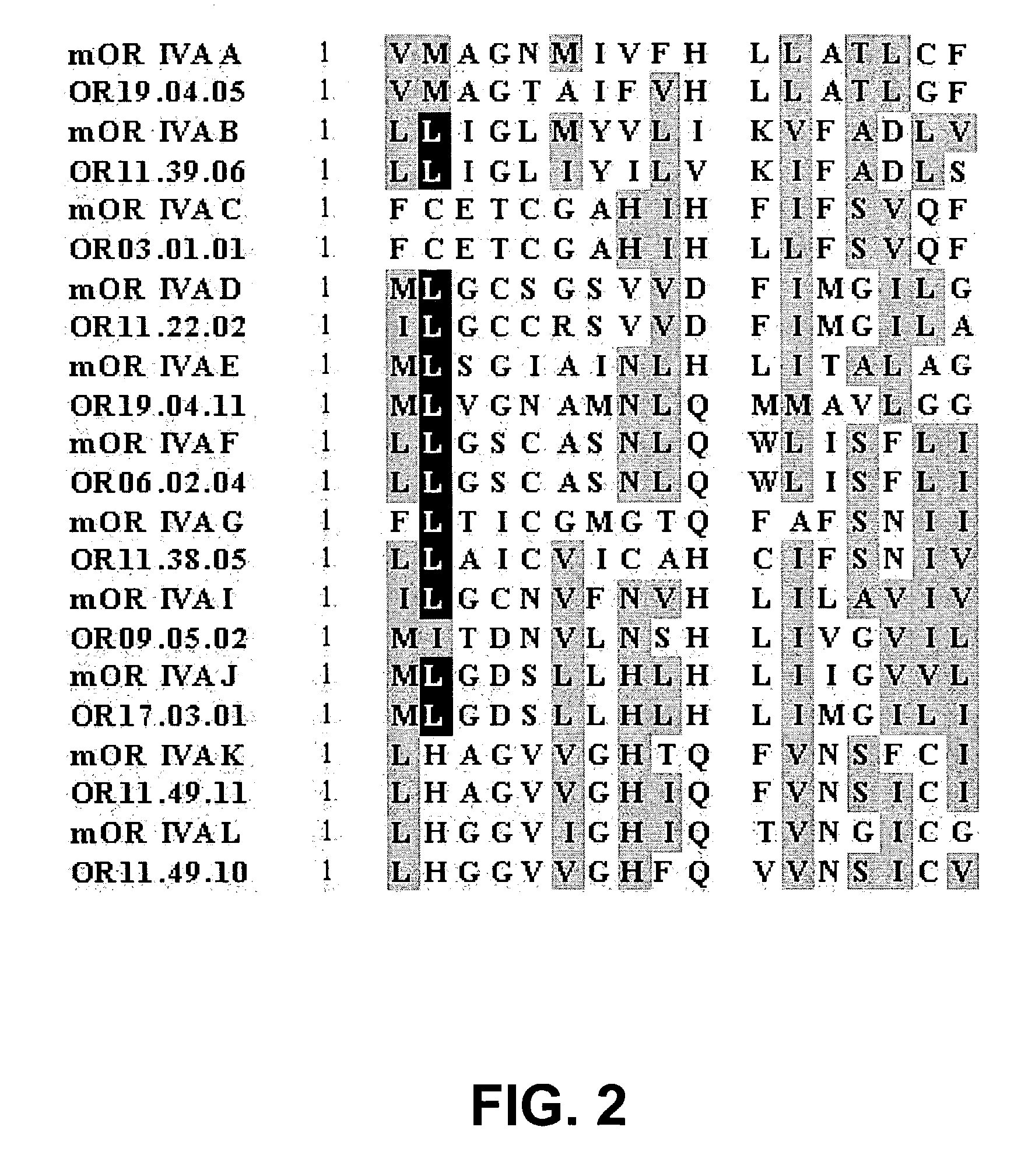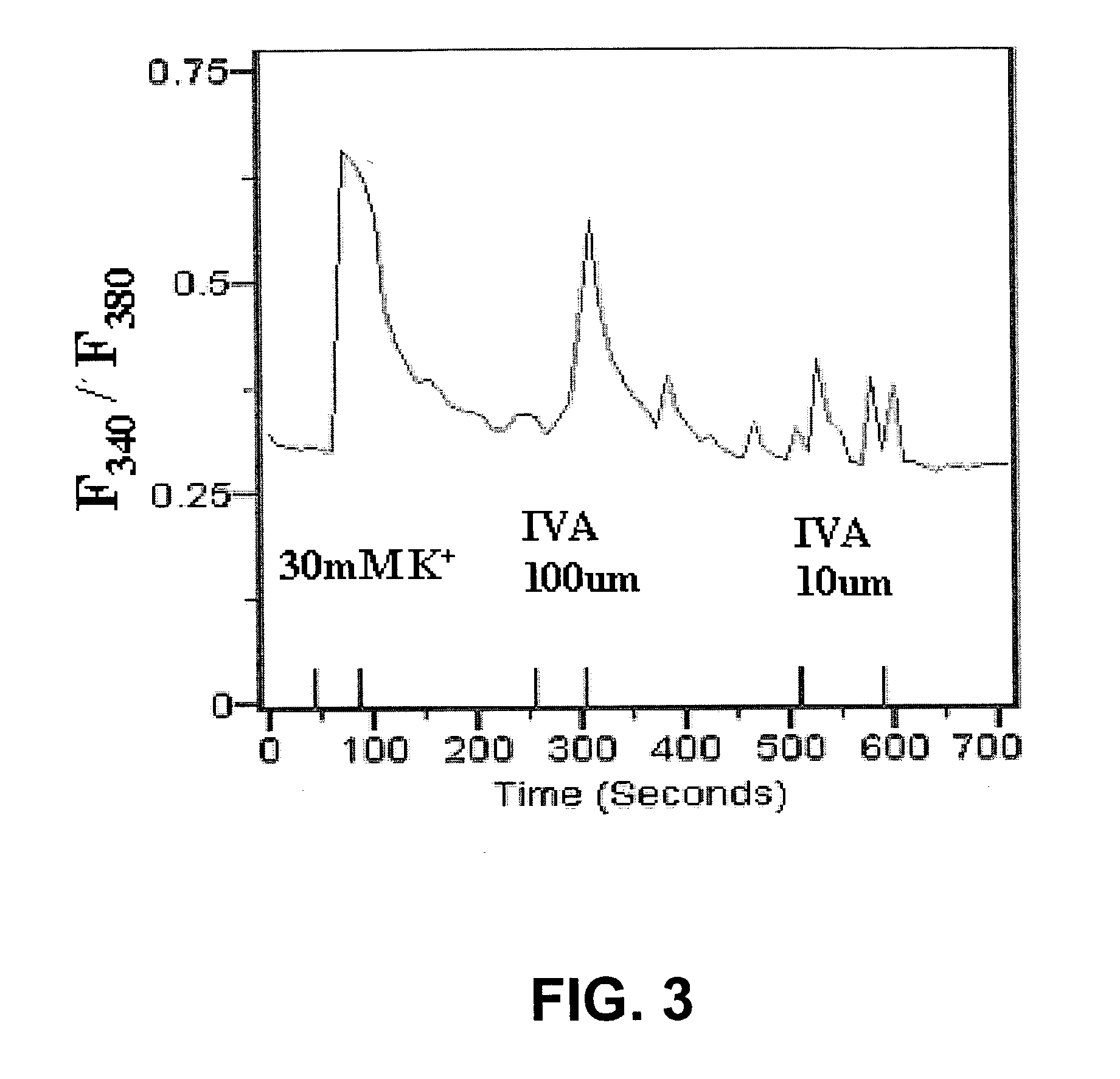Olfactory receptors for isovaleric acid and related malodorants and use thereof in assays for identification of blockers of malodor
a technology of isovaleric acid and receptors, which is applied in the field of isovaleric acid and related malodorants, can solve the problems of human psychophysical testing, application failure to provide the specificity of many of these receptors, and inability to identify whether
- Summary
- Abstract
- Description
- Claims
- Application Information
AI Technical Summary
Benefits of technology
Problems solved by technology
Method used
Image
Examples
example 1
Isolation and imaging of individual murine olfactory neurons
[0247] In this example, the details of how the individual murine olfactory neurons were isolated from murine olfactory epithelium and subjected to Ca.sup.2+ imaging are described.
[0248] Olfactory neuroepithelium was dissected from Balb / C mice and placed in a small Petri dish with phosphate-buffered saline (PBS) without Ca.sup.2+ and Mg.sup.2+. The tissue was fragmented under the dissecting microscope into pieces as small as possible. The buffer was removed and replaced by 2 ml of fresh PBS without Ca.sup.2+ and Mg.sup.2+ supplemented with 0.025% trypsin, 0.75 mM EDTA for 15 min. After dissociation, the tissue was transferred into 5 ml PBS without Ca.sup.2+ and Mg.sup.2+ and the tissue was triturated very gently by pipetting up and down 4-5 times with plastic disposable, progress of cell dissociation was monitored under inverted microscope. After dissociation, the tissue was transferred into 10 ml of Dulbecco's modified Eagl...
example 2
Single-Cell cDNA Synthesis and PCR Amplification of OR cDNA Fragments
[0251] The single neurons collected in lysis buffer were heated to 65.degree. C. in a water bath for 1 min to lyse the cells, then kept at room temperature for 1-2 min to allow the oligo (dT) primer to anneal to the RNA and put back on ice. The tube was centrifuged briefly and 0.5 .mu.l of a 1:1 mix of AMV- and MMLV-reverse transcriptases (Gibco-BRL) were added followed by incubation for 15 min at 37.degree. C. For control experiments, the reaction mixture was divided into two equal aliquots--one for reverse transcriptase reaction (cDNA synthesis) and another for a negative control without reverse transcriptase. After incubation, the reverse transcriptases were inactivated by incubation for 10 min at 65.degree. C., the tubes were put back on ice, then briefly centrifuged (2 min at 4.degree. C.). 4.5 .mu.l of 2.times. tailing buffer (stock tailing buffer: 800 .mu.l of 5.times. Gibco-BRL terminal transferase buffer, ...
PUM
| Property | Measurement | Unit |
|---|---|---|
| Magnetic field | aaaaa | aaaaa |
| Acidity | aaaaa | aaaaa |
| Surface | aaaaa | aaaaa |
Abstract
Description
Claims
Application Information
 Login to View More
Login to View More - R&D
- Intellectual Property
- Life Sciences
- Materials
- Tech Scout
- Unparalleled Data Quality
- Higher Quality Content
- 60% Fewer Hallucinations
Browse by: Latest US Patents, China's latest patents, Technical Efficacy Thesaurus, Application Domain, Technology Topic, Popular Technical Reports.
© 2025 PatSnap. All rights reserved.Legal|Privacy policy|Modern Slavery Act Transparency Statement|Sitemap|About US| Contact US: help@patsnap.com



